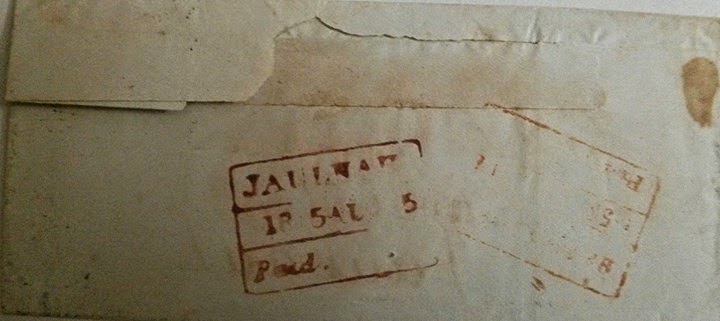The aim of this article is to help a beginner to identify the four annas lithographs and assign it to the correct printing. The following method may have its fallacies and proceed with the understanding that it needs experience to train the eyes. (Also the rare trial printing with head III and frame type II has been left alone to the experts)
The basic step is to find the dies of head and frame to determine the printing. See Fig1. The easy was is to identify the frame first. That makes the job easier. See Fig2.
 |
| Fig 2 |
Then comes the difficult task of head die. See Table 1
|
Tab 1. To
identify the India 1854 Four annas lithograph head dies |
|||||
|
👉Look at |
Diadem |
Chignon |
Eyebrows |
Jawline, Neck, Bust |
Others |
|
Head 👇 |
|||||
|
Die I |
Well shaded with lines touching
both upper and lower bands |
All 5 lobes with thin curved lines |
Long. Clear eyelids |
Dots never touch jawline. Distinct
bustline. |
Dots between hair strands (last
jewel of crown to chignon) |
|
Die I worn |
Same (no wear) |
Gradual loss of curved lines. 1st
lobe blank. 2nd lobe with a comma (multiple small lines) |
|
No dots. Ear end of jawline fades.
Bust line fades with inner left bustline disappears. |
|
|
Die II |
Same |
Strong single block comma in 2nd
lobe |
Short |
Strong jawline with dots touching
it. Thick bustline with dots. |
|
|
Die II worn |
Incomplete lines not touching the
upper bands |
Blank except for the comma. And
lower 2 lobes almost blank |
Becomes shorter gradually |
|
|
|
Die III |
Very shortened lines |
Full of curved lines. Slanting Y in
2nd lobe |
Shorter. Eyelids not distinct. |
Strong lines with lot of dots |
|
|
Die IIIa |
Lines almost absent |
Claw like 3 short thick parallel
lines |
|
|
Pearls in square jewels of crown
worn |
|
Table 2. Criteria to differentiate 4th and 5th printings |
||
|
|
Fourth printing (close setting) |
Fifth printing (medium setting) |
|
1 |
All 5 jewels in the crown of the
head are clear and firm |
Weaker |
|
2 |
The 2nd jewel is well
defined. |
The second jewel is broken at the
left side with the only right half of the circular jewel remaining. |
|
3 |
The 4th jewel is well defined. |
The fourth jewel circular head is
broken and odd-looking due to wearing. (Most specific) |
|
4 |
The cruciform mark inside the
square of the fifth jewel is prominent |
Four corner dots represent the
cruciform |
|
5 |
No guide dot. |
Guide dot: a small red dot
external (at 1mm away) to design of stamp at 9 o'clock position on left side
present. Guide dot was to help for placing the blue transfer at the correct
position. It is tiny and needs magnification to visualize. |
|
6 |
‘Y’ in the chignon |
|
|
7 |
|
Worn out appearance at the 4
o'clock position of the frame |
|
8 |
2 to 2.5 mm between stamps (close setting) |
Greater than 3mm between stamps (medium setting) |
|
The presence of guide dot and
ill-defined 4th jewel almost confirms the medium setting 5th
printing. Please also note that the earliest
Die III wide setting 3rd printing also has ill-defined 2nd
and 4th jewels, but this is not due to wear. This is due to faulty
transfer. |
||












